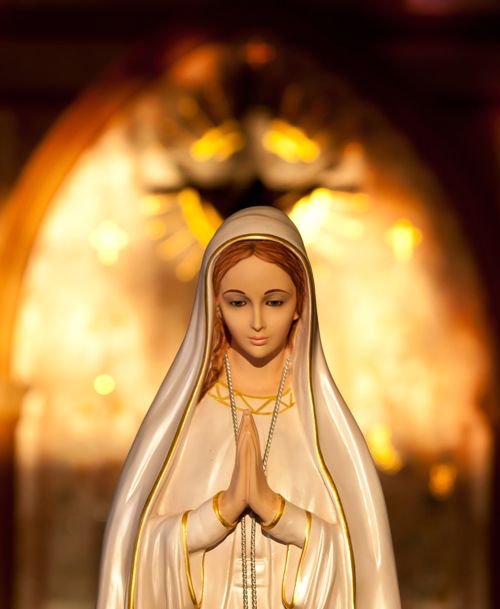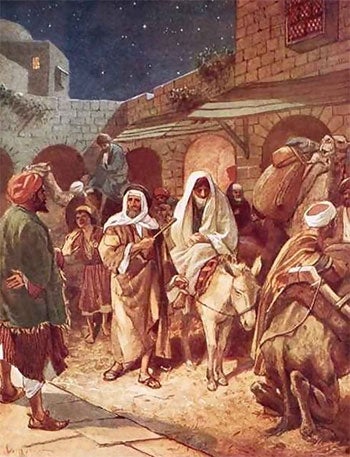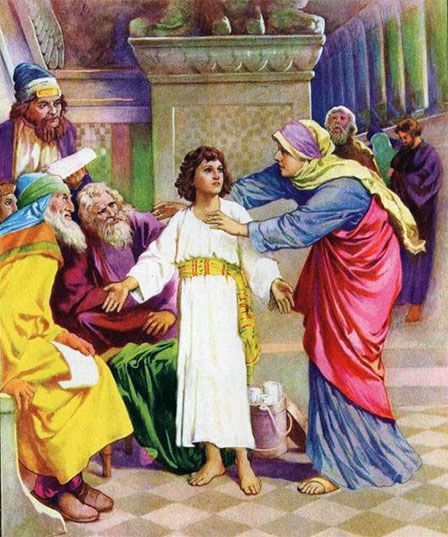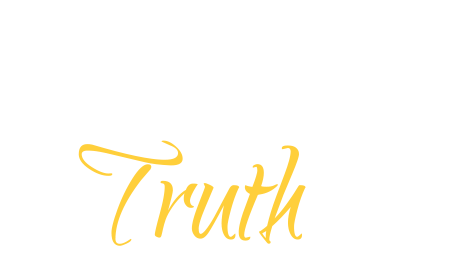
A Biblical Portrait of Mary
Though many ideas and doctrines have been formulated about Mary, this study seeks to take an unembellished look at the testimony of Scripture.
Save for a short reference to her in the book of Acts, every Bible reference to Mary is found in one of the four Gospel accounts. We'll examine each of these passages in chronological order beginning with the birth of Jesus. Then we will look at a reference in Revelation 12 that has often been attributed to Mary.
Of Royal Lineage
In the two nativity accounts found in Matthew and Luke, the first thing we notice is that Joseph and Mary were of the lineage of King David. Since Mary was the natural mother of Jesus, Christ was of the royal line biologically through her. Since Joseph was his adoptive father, Jesus had a legal connection to the royal line. Luke 2:4 explains, "Joseph also went up from Galilee, out of the city of Nazareth, into Judea, to the city of David, which is called Bethlehem, because he [Joseph] was of the house and lineage of David."
The Bible later affirms Mary's lineage to King David when it speaks "concerning His Son Jesus Christ our Lord, who was born of the seed of David according to the flesh" (Romans 1:3, emphasis added). The "flesh" in this passage refers to Christ's biological connection to Mary and her ancestors.
Though many references are found in Scripture to the birth of Christ, no Bible passage addresses the birth of Mary. In an apocryphal book—that is, a book outside the canon of Scripture—Mary's parents are said to have been Saint Anne and Saint Joachim, but this is purely a teaching of tradition. The Bible itself says nothing about Mary's parents, much less that she was conceived miraculously through what has been called the Immaculate Conception.
The Virgin
The Bible says that Joseph and Mary did not have sexual relations before Jesus was conceived and born. The Gospel writer and physician Luke recorded, "In the sixth month the angel Gabriel was sent by God to a city of Galilee named Nazareth, to a virgin betrothed [engaged] to a man whose name was Joseph, of the house of David. The virgin's name was Mary" (Luke 1:26, 27).
Notice also that Luke 1:34 says, "Mary said to the angel, 'How can this be, since I do not know a man?'" In Scripture, "to know a man" means to have sexual relations. Thus, Mary is making it clear that she was still a virgin. That why the angel explained, "The Holy Spirit will come upon you, and the power of the Highest will overshadow you; therefore, also, that Holy One who is to be born will be called the Son of God" (v. 35).
Matthew 1:18 also affirms the virginity of Mary before the birth of Christ, saying, "Now the birth of Jesus Christ was as follows: After His mother Mary was betrothed to Joseph, before they came together, she was found with child of the Holy Spirit" (emphasis added).
Was Mary Always a Virgin?

The notion that Mary was perpetually a virgin by a miracle of God and did not have sexual relations with Joseph or any other man during her life cannot be substantiated by the Bible. Matthew writes, "Then Joseph, being aroused from sleep, did as the angel of the Lord commanded him and took to him his wife, and did not know her till she had brought forth her firstborn Son" (Matthew 1:24, 25, emphasis added). This implies that after Christ's birth, Joseph had sexual relations with Mary.
Furthermore, Matthew 1:18 states, "Now the birth of Jesus Christ was as follows: After His mother Mary was betrothed to Joseph, before they came together, she was found with child of the Holy Spirit" (emphasis added). This also implies that after Jesus' birth, Joseph and Mary came together in marital union.
The Bible explains that Jesus did have brothers and sisters. "Is this not the carpenter's son? Is not His mother called Mary? And His brothers James, Joses, Simon, and Judas? And His sisters, are they not all with us? Where then did this Man get all these things?" (Matthew 13:55, 56). Most likely, these were the children of Joseph from a previous marriage, since it appears Joseph was significantly older than Mary. These siblings wanted to "lord … over" Christ in the same way that older brothers and sisters would treat a younger sibling.
There are some who emphasize that Mary was the "Mother of God." We can know this is not true in the strictest since because the Bible says that Jesus preexisted Mary. Christ said, "Now, O Father, glorify Me together with Yourself, with the glory which I had with You before the world was" (John 17:5, emphasis added). He also explained to the Jews, "Most assuredly, I say to you, before Abraham was, I AM" (John 8:58). This is a reference to Christ's divinity. (See also John 1:1–3.)
Of course, when we consider the human nature of Jesus, it is true that Mary willingly participated in bringing Him into this world. But what does the Bible say about Mary the person—her character.
Obedient, Poor, and Blessed
The Bible describes several personal qualities of Mary that expand our understanding of her role in Jesus' life.
For example, Luke 1:38 says, "Then Mary said, 'Behold the maidservant of the Lord! Let it be to me according to your word.' And the angel departed from her." Her willingness to obey is all the more significant when we remember that many in her community likely would have accused her of having sexual relations with Joseph before marriage and that Jesus was an illegitimate child. Knowing that she was willing to shoulder this unjust social stigma for the rest of her life, we can assume that she was especially courageous in her obedience to the Lord.
Not only was Mary humble and obedient, she was poor. When Jesus was brought to the temple to be dedicated, Joseph and Mary did not present the typical lamb offering. "Now when the days of her purification according to the law of Moses were completed, they brought Him to Jerusalem to present Him to the Lord (as it is written in the law of the Lord, 'Every male who opens the womb shall be called holy to the Lord'), and to offer a sacrifice according to what is said in the law of the Lord, 'A pair of turtledoves or two young pigeons'" (Luke 2:22–24). The parenthetical quotation in this text comes from Leviticus 12:6–8, where the Lord allows for the poor to provide a less expensive animal sacrifice if they could not afford to bring a lamb.
Another characteristic of Mary is that she was "blessed." The Scripture never says that she was to "bless," but that she was blessed by God. Here, Luke records Mary's song of thanks: "He has regarded the lowly state of His maidservant; for behold, henceforth all generations will call me blessed. For He who is mighty has done great things for me, and holy is His name" (Luke 1:48, 49, emphasis added).
When Mary visited her relative Elizabeth, the latter said, "Blessed are you among women, and blessed is the fruit of your womb!" (Luke 1:42). Elizabeth did not say, "Blessed are you above women," but, "Blessed are you among women." This was traditional expression used elsewhere in the Bible. (See Genesis 30:13.) Mary is not described as a giver of blessings; rather, she was one who was blessed by God in bringing the Messiah into the world.
In Need of a Savior
Another characteristic of Mary is that she was a sinner in need of redemption. Romans 3:23 explains, "All have sinned and fall short of the glory of God." Scripture makes it clear that there is but one exception to this rule: Jesus, who "was in all points tempted as we are, yet without sin" (Hebrews 4:15). Mary needed a Savior—as we all do. She even prayed, "My soul magnifies the Lord, and my spirit has rejoiced in God my Savior" (Luke 1:46, 47, emphasis added).
Some believe that Mary was a dispenser of grace based upon Luke 1:28, which says, "Having come in, the angel said to her, 'Rejoice, highly favored one, the Lord is with you; blessed are you among women!'" The Douay Version of the Bible (a Roman Catholic translation) translates "favored one" as "full of grace." This is based on the Latin Vulgate and suggests that Mary is a dispenser of grace like Jesus.
Yet Luke 1:30 reveals that she "found" favor, not "gave" favor: "The angel said to her, 'Do not be afraid, Mary, for you have found favor with God.'"
Instead, the Bible teaches that only One is full of grace, Jesus Christ. "The Word became flesh and dwelt among us, and we beheld His glory, the glory as of the only begotten of the Father, full of grace and truth" (John 1:14, emphasis added). Mary was highly favored, but she was never a dispensary of God's grace.
A Woman of the Word
Mary also knew her Bible, the Old Testament Scriptures. Look again at the following passage:
"When He had come to His own country, He taught them in their synagogue, so that they were astonished and said, 'Where did this Man get this wisdom and these mighty works? Is this not the carpenter's son? Is not His mother called Mary? And His brothers James, Joses, Simon, and Judas? And His sisters, are they not all with us? Where then did this Man get all these things?'" (Matthew 13:54–56, emphasis added).
It's quite possible that much of Jesus' knowledge of the Scriptures came from Mary, who likely would have taught Him about the Old Testament Scriptures when He was still a child in their home.
Mary's familiarity with the Old Testament is apparent in her song of praise, often called the Magnificat, found in Luke 1:46–55. Her words are based on passages from 1 Samuel, the Pentateuch, the Psalms, and even the book of Job. A woman of faith, we have every reason to assume that she made it a point to pass on this knowledge to Jesus who, even as a child, astounded the rabbis in the temple with His understanding of the Bible.
Let's consider one more passage about Mary connected with the birth of Christ. When Joseph and Mary brought their baby to the temple to be dedicated, they encountered a man named Simeon. Through the inspiration of the Holy Spirit, this godly man recognized Jesus as "the Consolation of Israel" (Luke 2:25) and gave a blessing on the infant.
Simeon also said to Mary that "a sword will pierce through your own soul also" (v. 35). Mary certainly experienced sorrow when Jesus endured hardship and accusations during His years of difficult ministry, culminating with His torturous beating and violent death on the cross. Some take the passage to mean that Mary must have been a co-redeemer with Christ, putting her on the same level as Jesus. Yet this passage simply points to the anguish Mary would naturally feel at the time of the crucifixion. (We'll cover this topic in more detail in a later article.)
In the Temple

When Jesus was twelve years old, He was taken by His parents to the temple in Jerusalem for Bar Mitzvah. For the first time, Christ observed the ceremonies and feasts that symbolized His life, mission, and destiny. We're then told, "When they had finished the days, as they returned, the Boy Jesus lingered behind in Jerusalem. And Joseph and His mother did not know it" (Luke 2:43). Pay attention to the language used here to describe Joseph and Mary: "Joseph and His mother"—this implies that Joseph was not Jesus' biological father.
When Joseph and Mary discovered that Christ was missing, they began searching for Him—eventually returning to Jerusalem, where they discovered Jesus in the temple speaking with the teachers. Mary said to Him, "Son, why have You done this to us? Look, Your father and I have sought You anxiously" (v. 48).
Jesus responded: "'Why did you seek Me? Did you not know that I must be about My Father's business?' But they did not understand the statement" (Luke 2:49, 50). Christ here was telling His mother that the God of heaven was His true father—not Joseph, a carpenter and not a religious leader. This caused her to think deeply about His words: "Then He went down with them and came to Nazareth, and was subject to them, but His mother kept all these things in her heart" (v. 51).
Some believe that Mary understood everything about the Messiah from the time of her conception, but passages like this affirm that she, like the disciples, did not fully understand the work and mission of Christ here on the earth.
The Wedding at Cana
Chronologically, the next passage that speaks of Mary is an incident at a wedding in Cana. As Jesus entered adulthood, the Scriptures indirectly indicate, as we'll see in this story, that Joseph was dead. After the wedding, the Bible says of Christ, "He went down to Capernaum, He, His mother, His brothers, and His disciples; and they did not stay there many days" (John 2:12). No reference here is made to Joseph, who would certainly have joined them in this festive occasion had he been alive.
When the wine ran out at the wedding, "the mother of Jesus said to Him, 'They have no wine'" (John 2:3). Notice how Jesus responds: "Jesus said to her, 'Woman, what does your concern have to do with Me? My hour has not yet come'" (v. 4). Mary was trying to get Jesus to do something about the problem.
While Jesus respectfully calls her "Woman," a common way for adult sons to address their mothers in those days, He kindly but firmly said, "My time has not yet come." Like most Jews, Mary longed for the Messiah to redeem Israel from the Roman Empire and to set up a glorious kingdom on earth—again showing that she did not understand the true nature of the kingdom of heaven and the pathway Jesus would trod to redeem humanity.
Thus, Jesus draw a boundary with her. She had raised her son and, like many mothers, likely felt that she had some right to direct His actions. But no human was to guide Jesus or demand His use of divine power—only His Heavenly Father.
At another time, as mentioned earlier, when Jesus' mother and siblings came to take Him away from the crowds, someone told Him that His family was waiting outside to speak with Him. But Christ's response is pointed:
"He answered and said to the one who told Him, 'Who is My mother and who are My brothers?' And He stretched out His hand toward His disciples and said, 'Here are My mother and My brothers! For whoever does the will of My Father in heaven is My brother and sister and mother'" (Matthew 12:48–50).
This isn't the first time Christ shifted attention away from His earthly family. "It happened, as He spoke these things, that a certain woman from the crowd raised her voice and said to Him, 'Blessed is the womb that bore You, and the breasts which nursed You!' But He said, 'More than that, blessed are those who hear the word of God and keep it!'" (Luke 11:27, 28). When someone sought to exalt Mary, Jesus turned the focus to His ministry of proclaiming the gospel.
Calvary and Beyond
Mary also shows up at the end of Christ's ministry, specifically while He was hanging on the cross.
"Now there stood by the cross of Jesus His mother, and His mother's sister, Mary the wife of Clopas, and Mary Magdalene. When Jesus therefore saw His mother, and the disciple whom He loved standing by, He said to His mother, 'Woman, behold your son!' Then He said to the disciple, 'Behold your mother!' And from that hour that disciple took her to his own home" (John 19:25–27).
Even while He distanced His ministry from Mary, at the point of death, Jesus still had concern for the welfare of His earthly mother. He commanded His disciple, John, to care for her.
There is one more reference in Scripture to Mary after the resurrection of Jesus. It took place in an upper room on the day of Pentecost, after Christ returned to heaven.
"When they had entered, they went up into the upper room where they were staying: Peter, James, John, and Andrew; Philip and Thomas; Bartholomew and Matthew; James the son of Alphaeus and Simon the Zealot; and Judas the son of James. These all continued with one accord in prayer and supplication, with the women and Mary the mother of Jesus, and with His brothers" (Acts 1:13, 14).
While it's exciting to note that Jesus' brothers finally came around to accepting Him as the Messiah, notice the reference to "Mary the mother of Jesus." The writer of Acts, Luke, does not place any particular emphasis on her. He doesn't exalt her, nor are we told that anyone worshiped or prayed to her. Indeed, if anything, the central figure of this story is the disciple Peter, not Mary.
After this mention in Acts, there are no more references in the Bible to Mary. Some assume that because her death is not mentioned, she was taken to heaven without dying. Of course, the deaths of the disciples are not mentioned either. The most anyone can actually say is that the Bible is silent regarding the death of Mary. The last people the Bible mentions were resurrected came from their graves at His resurrection (Matthew 27:51–53).
The New Testament teaches that the next group who will be resurrected are those who are Christ's followers who are asleep in their graves. The apostle Paul explained, "For the Lord Himself will descend from heaven with a shout, with the voice of an archangel, and with the trumpet of God. And the dead in Christ will rise first" (1 Thessalonians 4:16).
Like other true believers, Mary is in her grave awaiting the second coming of Christ. She has not yet heard the trumpet sound of God—neither has King David, her ancestor, for that matter (Acts 2:34).
Some ask, "If Mary died and is still in the grave, then who is appearing all over the world claiming to be the Virgin Mary?" You can read about this in the article "The Ecumenical Mary".
Woman Standing on the Moon
Finally, let's address a passage in Scripture that many claim refers to Mary.
"Now a great sign appeared in heaven: a woman clothed with the sun, with the moon under her feet, and on her head a garland of twelve stars" (Revelation 12:1).
When visiting many Roman Catholic cathedrals, you will often see Mary depicted as standing on the moon, clothed with the sun, having a crown of 12 stars on her head, and holding the infant Jesus in her arms. She is often shown trampling a serpent as well.
But the woman being described in this passage of Revelation is actually a symbol of the church—not Mary. The Lord explained through the prophet Jeremiah, "I have likened the daughter of Zion to a lovely and delicate woman" (Jeremiah 6:2).
The reference in Revelation 12 also states, "Then the woman fled into the wilderness, where she has a place prepared by God, that they should feed her there one thousand two hundred and sixty days" (v. 6). We know in Bible prophecy that a day symbolizes a year (Numbers 14:34; Ezekiel 4:5, 6; Daniel 9:24–27). If this woman is Mary, how is it that she fled into the wilderness for 1,260 years and was persecuted by the serpent if she were taken to heaven?
This same time period (1,260 days/years) is spoken of by Daniel in reference to God's people, who would be persecuted by an evil power for a "time and times and half a time" (Daniel 7:25), which is another way of saying three-and-one-half years or 1,260 days. Later in Revelation 12, the same language is used, as is found in Daniel, for this time of persecution, "a time and times and half a time" (Revelation 12:14). Clearly, the woman standing on the moon in Revelation 12 is God's church, which stands in opposition to an impure woman who represents an apostate church. (See Revelation 17.)
Summary
When we look only at what the Bible says about Mary, we discover that God chose a virtuous young woman to give birth to Jesus. Mary was of the royal blood line of David and was a virgin at the time she conceived Jesus through the Holy Spirit. Like all humans, she was in need of a Savior. While some churches elevate the status of Mary as a dispenser of God's grace and even a co-redeemer with Jesus, there is no basis in the Bible for this. However, we'll consider the roots of this teaching in the next article in this series.
*This series of articles is based on messages by Pastor Stephen Bohr.
To find additional information on his ministry, please visit www.secretsunsealed.org.
To purchase his full series on Mary, please click here.
